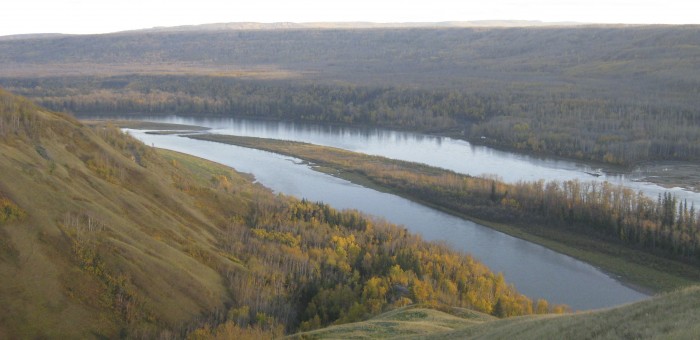Not too late to change course on Site C dam
Since becoming an MLA I have visited the proposed location of the Site C dam on the Peace River twice. Most recently, on Aug. 23, I travelled a section of the river with a group of concerned community members. It’s hard to fathom the scale of planned development unless you see it in person, just as it’s hard to grasp the human and cultural cost of this project until you listen to the people caught in the middle of it.
Dam construction would flood more than 5,000 hectares of land – drowning homes, traditional lands, scores of culturally important sites, and 15,985 acres of agricultural land.
Local and indigenous people in the area are being systematically stripped of their livelihood and culture by one arm of government, while receiving apologies for past injustices and promises of reconciliation from another.
Compounding the environmental, historical, cultural and agricultural damages is a reckless disregard of energy economics.
Since 2005, domestic demand for electricity in B.C. has been essentially flat, but over the next 20 years BC Hydro forecasts our energy needs will increase by about 40 per cent as a consequence of both population and economic growth. They are selling Site C as the solution to this growing electricity demand, but their argument doesn’t hold water.
Upon completion, the dam would produce 1,100 MW (megawatts, i.e. millions of Watts) of power capacity and up to 5,100 GWh (gigawatt hours, i.e. billions of watt hours) of electricity each year.
Currently only about 1.5 per cent of B.C.’s electricity production is supplied by wind energy (compared to roughly 20 per cent in P.E.I.). With our mountainous terrain and coastal boundary, the potential for both onshore and offshore wind power production is enormous. The Canadian Wind Energy Association and the BC Hydro Integrated Resource Plan 2013 indicate that 5,100 GWh of wind-generated electricity could be produced in B.C. for about the same price as the electricity to be produced by the Site C dam.
A report by the Canadian Geothermal Energy Association noted B.C. also has substantial untapped potential for firm, on demand, geothermal power which could be developed where power is needed.
While costs associated with Site C will be borne by provincial taxpayers (a price tag that will eventually be much more than BC Hydro’s estimate of roughly $9 billion), solar, wind and geothermal project risks are covered by industry. Alternative sources coupled with existing dams could provide enough energy to meet the needs of British Columbians, with the potential to scale up as needed. They would also provide better economic opportunities to local communities and First Nations across the province, with lower impacts on traditional territories.
Instead of a diversified approach to renewable energy, the B.C. government is pushing Site C because they want to offer LNG proponents access to firm power. As I have been explaining for years, however, there will be no B.C. LNG industry in the foreseeable future because of a global glut in natural gas and plummeting prices for imported LNG in Asia. As the government desperately doubles down on LNG, renewable projects are moving elsewhere. Just this year they let a $750 million US investment to build wind capacity on Vancouver Island slip away, despite buy-in from five First Nations, TimberWest, EDP Renewables and the Canadian Wind Energy Association.
I wanted to see how much has been done when I visited Site C this summer. Nothing has passed a point of no return. Proceeding with Site C is actively driving clean energy investment out of the province, but it is not too late to correct our province’s power trajectory.
Comments are closed.




